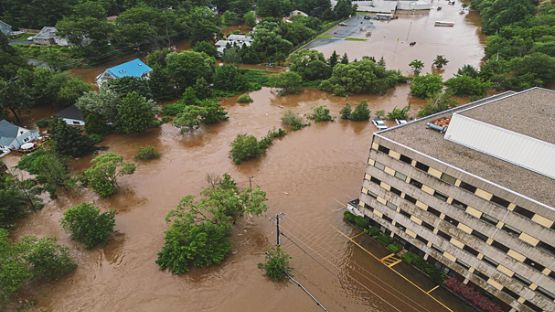When it comes to safety, the owners and managers of commercial buildings such as manufacturing facilities, warehouses, offices, hotels, and multifamily residential buildings have a responsibility that goes beyond basic property management.
Although fire codes and other industry standards require thorough, annual inspections, many building systems require more frequent testing and maintenance to ensure they work optimally when needed and to avoid safety issues and costly repairs.
Aviva Risk Management Solutions (ARMS) experts offer their specialized advice on what to test—and how often.
Fire & life safety systems
Every commercial building is unique but one thing they all share is the need for reliable fire and life safety systems, including:
- Fire pumps
- Fire alarms
- Sprinkler systems
- Fire doors
- Portable extinguishers
- Emergency generators
- Emergency lighting
It’s important to have a schedule for weekly, monthly, or quarterly checks, depending on the system. These inspections help detect issues before they compromise performance.
For instance, smoke alarms in residential units and hotel suites are especially important since these devices provide early warning to alert occupants so they can evacuate their units. We encourage monthly testing of smoke alarms and replacement every 10 years.
For all types of commercial buildings, frequent Inspection, Testing, and Maintenance (ITM) of fire and life safety systems and devices are critical. It’s also important to maintain detailed records of ITM activities that align with National Fire Protection Association (NFPA) standards, the National Fire Code of Canada, provincial fire codes, and recognized good practices. This also demonstrates proactive risk management, which is an important factor for compliance and insurance purposes.
Electrical distribution systems
Regular inspection and maintenance of electrical distribution systems is essential to prevent costly failures and reduce fire risk. Industry standards such as NFPA 70B, ‘Standard for Electrical Equipment Maintenance’ and CSA Z463, ‘Maintenance of Electrical Systems’ emphasize the importance of formal Electrical Maintenance Programs (EMPs).
Our ARMS specialists encourage:
| Electrical system features | Inspection frequency |
|
Every 3 or 5 years by a licensed electrician |
| Electrical distribution system | Infrared thermography imaging performed every 1 to 3 years by a certified thermographer |
Infrared (IR) imaging detects heat anomalies caused by loose connections, corrosion, and insulation breakdown. It’s performed without shutting down the electrical system, allowing inspections to take place without disrupting operations. As a preventative maintenance tool, IR imaging complements traditional methods of electrical system testing and inspection.
Learn more about IR
- Infrared thermography can help meet NFPA 70B standards
- How your business can benefit from infrared technology
- How to ensure your infrared survey is done right
Explore our Specialist Partner Network to find qualified electricians and thermographers.
Incident reporting
Events like a slip, fall, equipment malfunction, or property damage, should be documented immediately—even if it doesn’t result in an injury. “Near misses” often reveal hidden risks that, if left unaddressed, may lead to future injuries or claims.
A strong reporting process starts with securing the area to prevent further harm. Avoid admitting fault and use a standardized form to record essential details, including:
- Who was involved
- Witness information
- Time and location
- Environmental conditions
- Injuries or damage
- Corrective actions taken
Reports should be reviewed internally to identify trends and improve safety protocols. Store them securely and share with your insurance broker to support potential claims and receive risk management advice.
Incident reporting resources
Water damage prevention
Water damage is one of the most frequent and costly losses that occur in commercial buildings. Whether caused by aging infrastructure, poor installations, missed maintenance, or human error, even a small leak can lead to costly repairs, business interruption, and indoor air quality issues, caused by mold, if improperly remediated.
Key prevention strategies include:
- Routine inspections. Check plumbing, roofs, and water systems regularly, regardless of the age of the building and its systems.
- Roof maintenance. Inspect twice a year (spring and fall) and after storms, including high winds and heavy rainfall or snowfall events. Look for ponding, vegetation growth, cracks, damaged flashing, and snow drifting.
- Technology integration. Leak detection systems, especially those connected to Building Automation Systems (BAS), provide early alerts and help prevent damage.
- Emergency planning. A water damage control plan should be created and outline steps before, during, and after an incident. Train staff, residents/employees and test the plan periodically.
By combining proactive inspections, smart technology, and emergency preparedness, you can significantly reduce water damage risks and protect both your investment and occupants.
Water damage prevention resources
- Why your building needs a water mitigation plan
- Protect your business with PrevTech electrical monitoring solutions
- Prevent water damage in commercial or residential buildings
- Why water damage insurance claims are on the rise
Prioritizing fire and life safety readiness, electrical system upkeep, thorough incident reporting, and water damage prevention will help you maintain and protect your assets and provide a safe and comfortable work or living environment.
Explore our Specialist Partner Network to find companies that specialize in electronic water leak detection and prevention technology.
Aviva Risk Management Solutions is here to help
For risk management questions or support, contact our Aviva Risk Management Solutions team at arms.canada@aviva.com.













